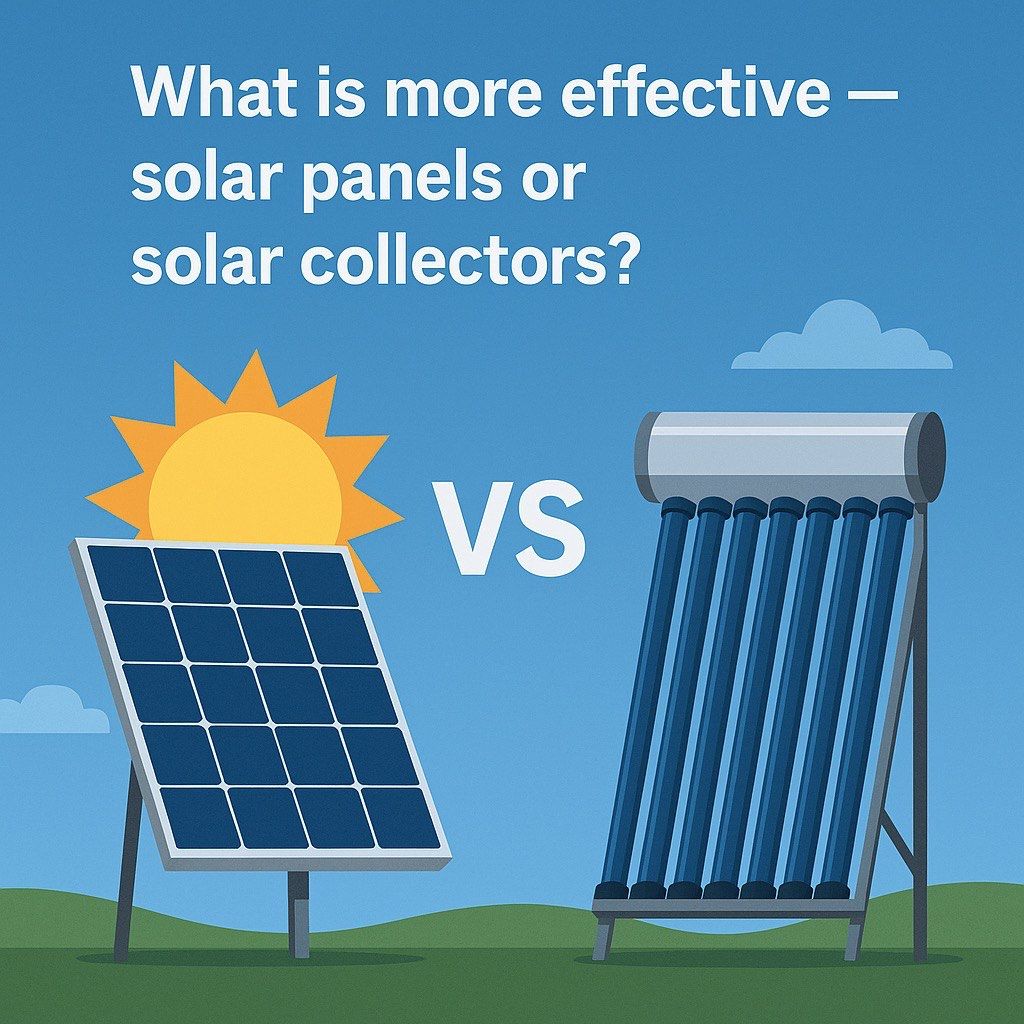
When we talk about renewable energy, solar panels instantly come to mind. They’ve become the icon of sustainability. But what if I told you there’s another solar technology that’s significantly more efficient, yet rarely mentioned?
Enter: solar thermal collectors.
While solar panels (photovoltaics) convert sunlight into electricity, their efficiency usually ranges from 18–22%, depending on quality. The rest? Lost as heat.
Solar collectors, on the other hand, don’t generate electricity at all. Instead, they convert solar energy directly into heat. Their efficiency? Up to 80–90%. That’s not a typo. No conversion losses — just direct thermal gain used for hot water and heating.
Here’s the twist: despite their superior performance in thermal applications, solar collectors are largely unknown to most homeowners and even many professionals.
To illustrate:
- A 1 kW solar panel system on a sunny day generates around 4–5 kWh of electricity.
- A solar thermal collector of the same area can deliver 3–5 kW of heat per hour — consistently, without the need for inverters or batteries.
Now let’s talk cost:
- Fully installed, 1 kW of solar panels may run €1300–€1800, including inverters and wiring.
- An equivalent solar thermal system? €600–€900, including the tank and controller.
So why aren’t collectors mainstream?
Because electricity is easier to sell than heat. Solar panels plug into the grid, produce pretty app data, and benefit from subsidies. Thermal energy is quiet, practical, invisible — and vastly underestimated.
I often recommend hybrid systems that combine both technologies. But if your main goal is heating water or supporting home heating, solar collectors are unmatched in efficiency, speed of payback, and long-term reliability.
They don’t require cooling. They don’t need storage batteries. They just work — silently and efficiently.
So ask yourself: do you want energy that looks impressive on an app, or energy that delivers real value in your home?
